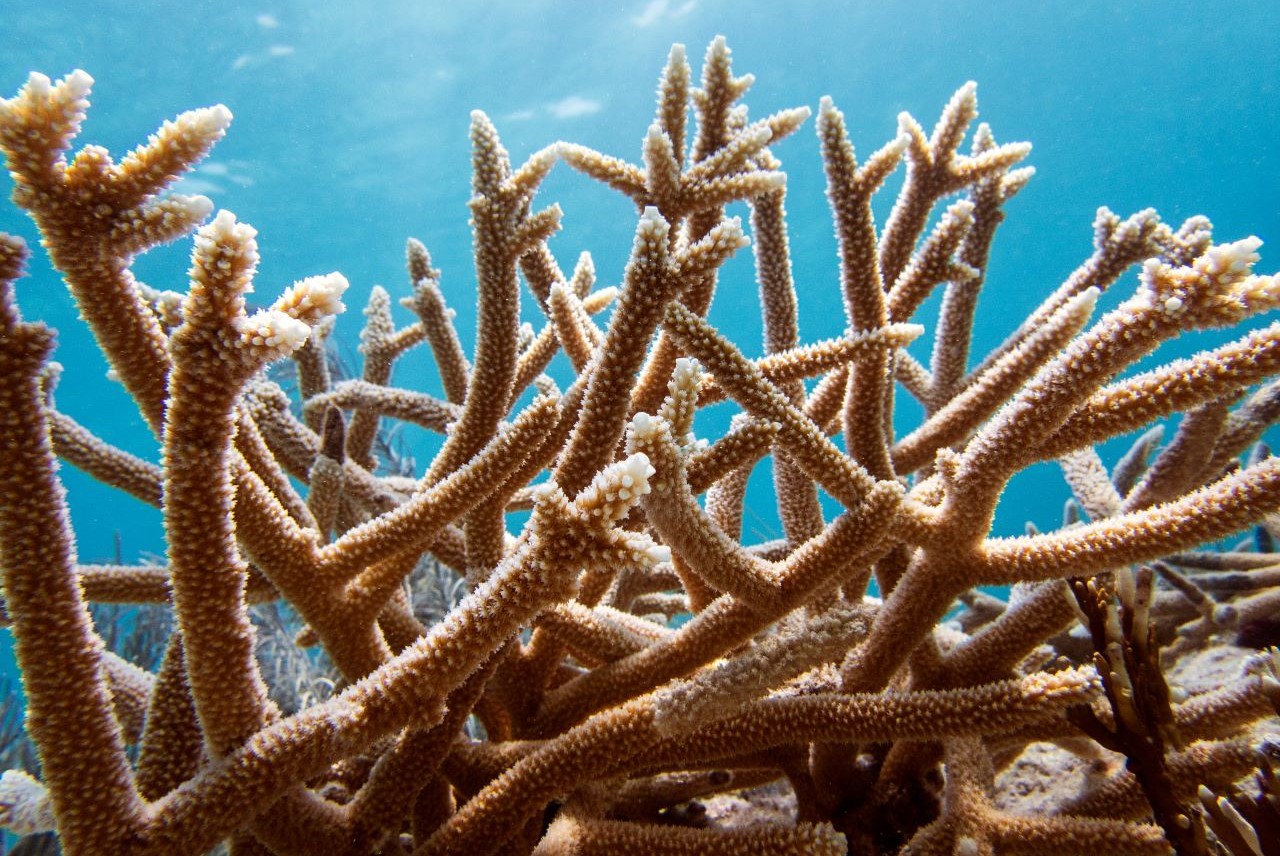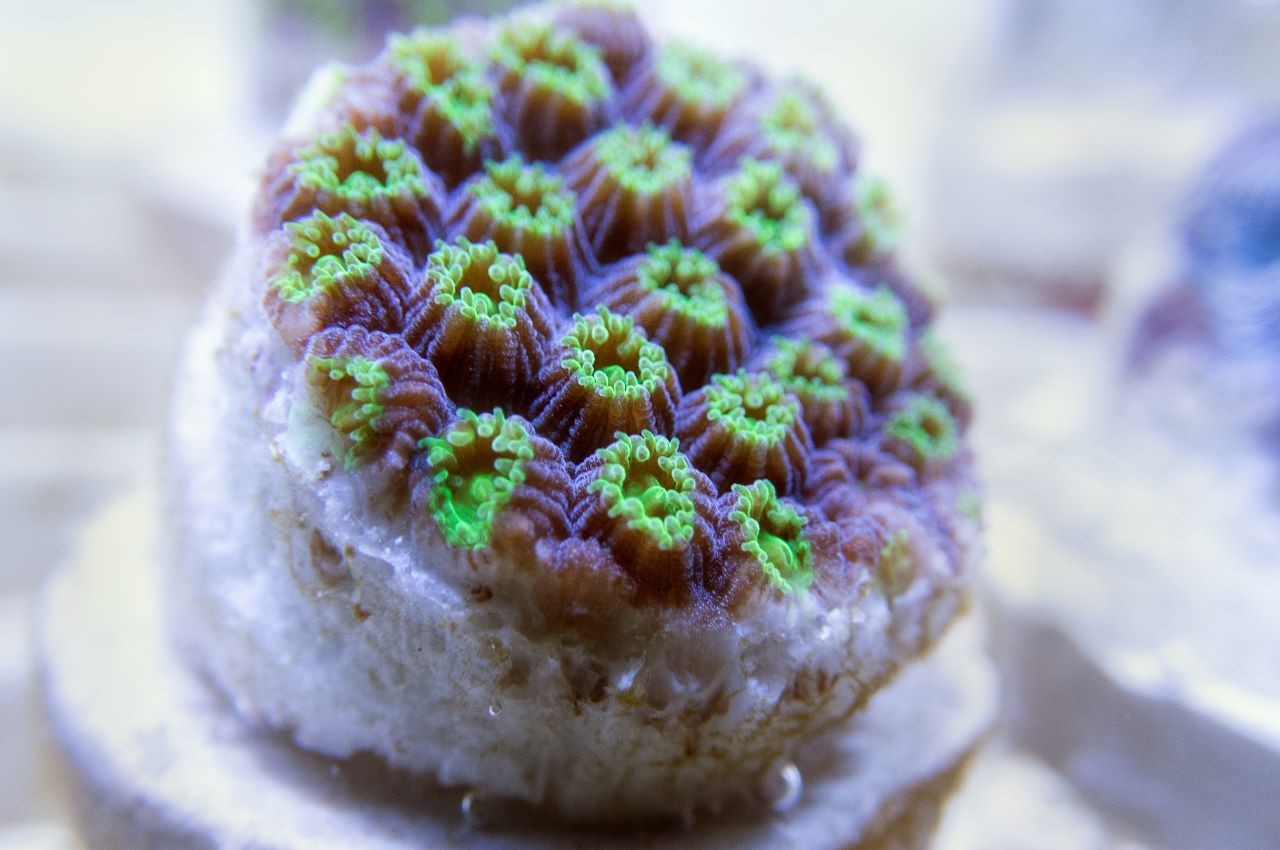July 28 marks World Nature Conservation Day, an occasion to raise awareness about the importance of safeguarding Earth’s natural resources. Today and every day, nature urgently needs our help.
Climate change, habitat loss, overexploitation, pollution, and disease have led to an unprecedented loss of species and the ecosystems that support them. Wildlife populations have declined by an average of 69% since 1970, and experts estimate that species are going extinct 1,000 to 10,000 times faster than the background extinction rate. Despite valiant efforts to restore declining populations, many traditional approaches can’t keep pace with the staggering rate of loss and worsening conditions. There is growing consensus that the biodiversity crisis demands bold, urgent action.

Revive & Restore partners are pioneering research into stem cells as the basis for genetic therapies in corals, including the endangered staghorn coral (Acropora cervicornis). Photograph: Liv Williamson
A critical question looms: what will it take to actually restore viable wildlife populations and ecosystems to our planet? If endangered species and ecosystems stand a chance, restoration must be complemented by new interventions.
As a coral scientist, I have witnessed the devastation caused by losing key species and ecosystems. Coral reefs are among the most ecologically and economically valuable ecosystems of our planet. Half a billion people worldwide rely on them for the critical services they provide, such as creating a habitat for over a quarter of all marine life, protecting coastal communities from flooding and erosion, and supporting economies through fisheries, tourism, and recreation. Sadly, just over the past few decades we have lost half of the world’s coral reefs and the myriads of benefits they provide due to the compounding threats of climate change, disease, pollution, and overfishing.
At Revive & Restore, where I work, we recognize that conserving nature does not just mean slowing biodiversity loss; it means proactively restoring species in ways that build resilience in the face of environmental change. We believe biotechnology can play a crucial role in this effort, offering tools that are able to support and accelerate nature’s ecological and evolutionary processes.

Liv Williamson collects data on bleached and dying elkhorn corals (Acropora palmata) during an unprecedented marine heatwave in the Florida Keys in the summer of 2023. Photograph: Liv Williamson
Through innovative research projects, Revive & Restore’s partners apply the tools of genetic rescue, including genomic sequencing, cellular biology, cryopreservation, and advanced reproductive technologies, to support conservation and management. I manage a portfolio of projects focused on coral conservation, which leverage foundational knowledge derived from biomedical science and agriculture to aid in coral restoration interventions. Some examples of the work we have developed and funded include:
Stem cells to transfer resilience
A team funded by Revive & Restore were the first to isolate stem cells from corals, and now they are developing techniques to transplant cells from resilient donor corals – say, colonies that have high heat tolerance or disease resistance – into more sensitive recipient corals to boost their resilience. The goal is to develop a foundation for genetic therapies in corals using stem cells
Probiotics to combat coral disease
With the help of biomedical technologies and advanced robotics, one of our partners has developed a high-throughput system for isolating, culturing, and testing hundreds of bacterial strains as potential probiotic treatments to prevent the deadliest coral disease. They are now testing ways to deliver these probiotics at scale and in the field to save diseased corals and increase restoration success.
Biobanking diversity while we still can
Last year, a team funded by Revive & Restore succeeded in cryopreserving and reviving entire coral fragments for the first time, and now they are optimizing these techniques to make them portable and scalable for rapid deployment worldwide. This will open the door to creating large-scale coral biobanks to safeguard existing genetic diversity for future conservation actions.

Scientists have successfully cryopreserved and revived entire fragments of coral for the first time, opening the door for biobanking efforts to safeguard existing genetic diversity. Photograph: Liv Williamson
These are just a few examples of promising biotechnologies that could advance coral conservation. However, it’s important to acknowledge that while genetic and technological interventions are vital, they are not a panacea. Without urgent action to curb climate change, many of these strategies will only provide temporary relief. If planet-warming fossil fuel emissions continue at our current pace, and ocean temperatures continue breaking records year after year, even the most robust corals may not be able to survive in the hostile world humans have created for them. Genetic rescue efforts do not preclude solutions that stop the root causes of loss.
In addition, for novel conservation actions to succeed in the long term, engagement and permission from local stakeholders, including government officials and the public, are crucial. When evaluating these technologies, we should consider not only their potential benefits and risks, but also the risks of inaction. We have a responsibility to protect endangered species and use all the resources at our disposal to reverse their decline. I am hopeful that a combination of approaches, including restoration efforts already underway, the scaling of biotechnologies for conservation, and public participation, can help corals and other endangered species persist in a changing environment.
On this World Nature Conservation Day, let us challenge the status quo and recognize that collectively, we have the power to proactively protect nature for generations to come and preserve the species and ecosystems that make our planet rich, diverse, and beautiful.
